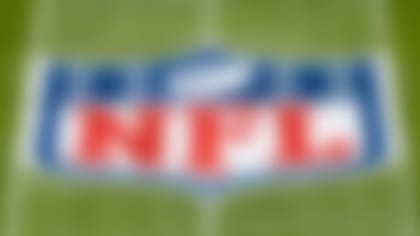On December 5, 2023, NFL Chief Medical Officer Dr. Allen Sills led a discussion with a panel of experts on the collaborative, research-driven approach that has helped to drive progress in reducing lower extremity injuries. The full webinar is available to view below.
Panelists discussed the progress made over the past few years to effectively reduce lower extremity injuries among NFL players, particularly during the preseason, which historically has accounted for a significant portion of lower-extremity injuries. The discussion also touched on the NFL-NFLPA Joint Surfaces Committee's surface testing, as well as its support for innovative research into surface materials in service of greater consistency across fields for players.
The panelists joining Dr. Sills, panelists included:
- Mackenzie Herzog, Injury Surveillance and Analytics Epidemiology Director, IQVIA
- Andre' Tucker, Head Athletic Trainer, Chicago Bears
- Nick Pappas, CSFM, Field Director, NFL
- Meade Spratley, Senior Researcher, Biocore LLC
Below are some selected thoughts from the experts from the panel:
On how your approach to preparing and training athletes can drive down injury numbers:
Dr. Mackenzie Herzog: "Reducing the number of injuries during [the] training camp period is really a winning strategy, and it helps drive home the point that reducing injuries allows your players to be available and on the field. Our last five Super Bowl champs ranked on the lower end of number of injuries year-over-year in the training camp period, which really highlights that the ramp-up strategy not only reduces injury but allows you to have your players available within the season."
Andre' Tucker: "When you're doing non-contact ramp-up… where we sometimes lose the transition is just because we're putting on pads, we have to keep in mind it changes the intensity. So instead of just continuing with the same ramp-up, it's really smart that you pull back and almost start over. I don't think as clinicians or professionals we realize that piece – and that's where we lose the transition. We assume that 4-5 days you ramped up, let's put shoulder pads on and keep moving. But you have to understand that because you put the pads on, automatically it changes intensity, so you now have to, as a clinician or coach or overseer of the program, dial it back and ramp up appropriately now that you've changed the intensity of the activity."
On the complex multitude of factors that impact injury in action:
Dr. Meade Spratley:"There isn't one factor that does a great job of predicting injury. Absolutely, a field that is way too hard is something we pay attention to for its possible influence on injury risk. But the truth is, a field may be hard and very bouncy, it may be soft and damp, it may be the opposite of either of those, and so you have to really think about a comprehensive mechanical response, and you can't zero in on a single factor."
On preparing players for varying surfaces and conditions each week:
Andre' Tucker:"It goes back to the word I keep using – education. Myself, the equipment staff and perfromance staff will sit down to discus what the upcoming playing surface will be depending on where we're going to play, what the climate is going to be, down South versus up North, is it indoor or is it outdoor – kind of determine what that surface is going to be like and then deal with the question of how we'll present that to the players. And we try to get that information in front of the team early in the week."
On how surface management and sustained maintenance can help ensure safety, performance and consistency on the field:
Nick Pappas: "There's no [one] size fits all, there's no one site that's the same as the next site. All of them require different construction processes, difference performance needs – the list is long. You can't just say we're going to put down an artificial field and walk away from it."
Dr. Meade Spratley:"We like to say that the best field is one that is properly maintained. It's clear that field managers can have a tremendous effect through their maintenance practices, tailoring a field to hit a certain response."
Nick Pappas:"Artificial fields have become so much more intricate with specifications to the fiber styles, fiber types, density of fibers, weight of the infills, etc. – that they need quality field managers tending to them. It's no different than it is managing a natural grass playing surface. Both need full-time attention before the game, after the game, monitoring during the game and obviously all we can do is continue to test, and based on our metrics try to improve and create targets for improved consistency."
On the latest innovations in understanding field surfaces:
Dr. Meade Spratley: "We instead took the sort of test you'd run in a laboratory, which others have done for decades, and said 'how do we put this machine on-field?' So, it's a little different that others thing that are out there, but it's measuring player-like loads. It's not dropping 1/10 of a player's load – it's putting down the full force and excitation that an NFL player would see. That way we can generate responses that are on the field of play, but are also relevant for the NFL population. Those two things are really the 'unlock,' we think."
On the role and collaborative elements of the NFL-NFLPA Joint Surfaces Committee in research and furthering player safety:
Nick Pappas:"We take a lot of feedback from the players – those are our end users at the end of the day. This really came to light when we started having these conversations more openly... to determine what is the best path forward. A lot of it came down to determining how do we jointly-fund, jointly come up with a program to continue to research, continue to improve, continue to determine what's going on with our fields: what level do they contribute to potential injury, how do they affect our game from a competitive standpoint and all the things in between those two. Working together as a group is really the way to move forward to find that end result we're targeting right now."











